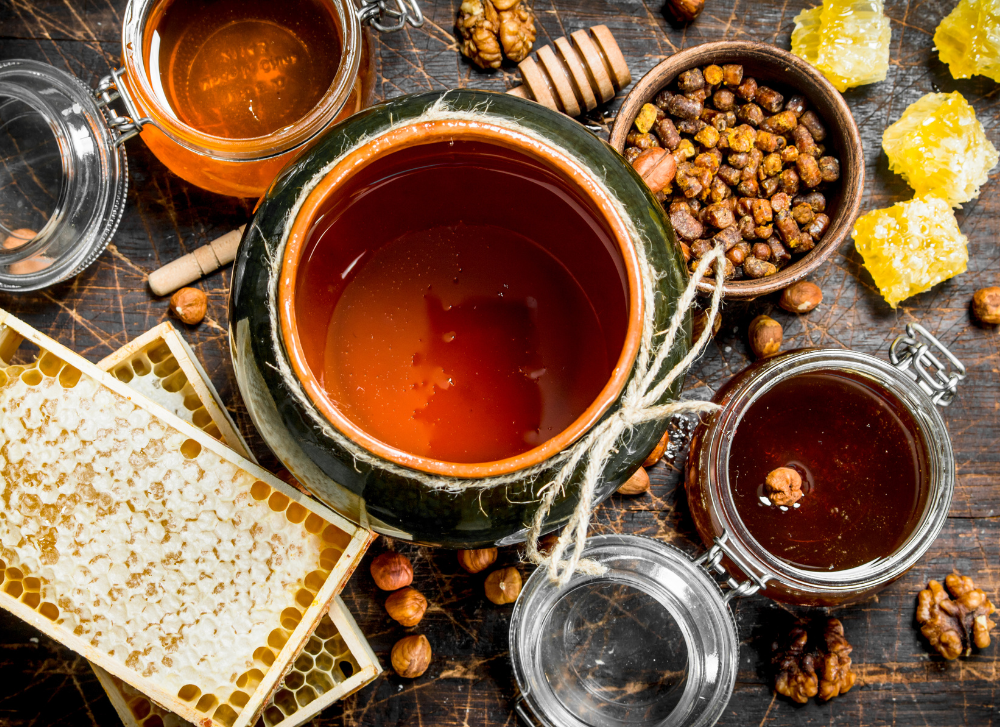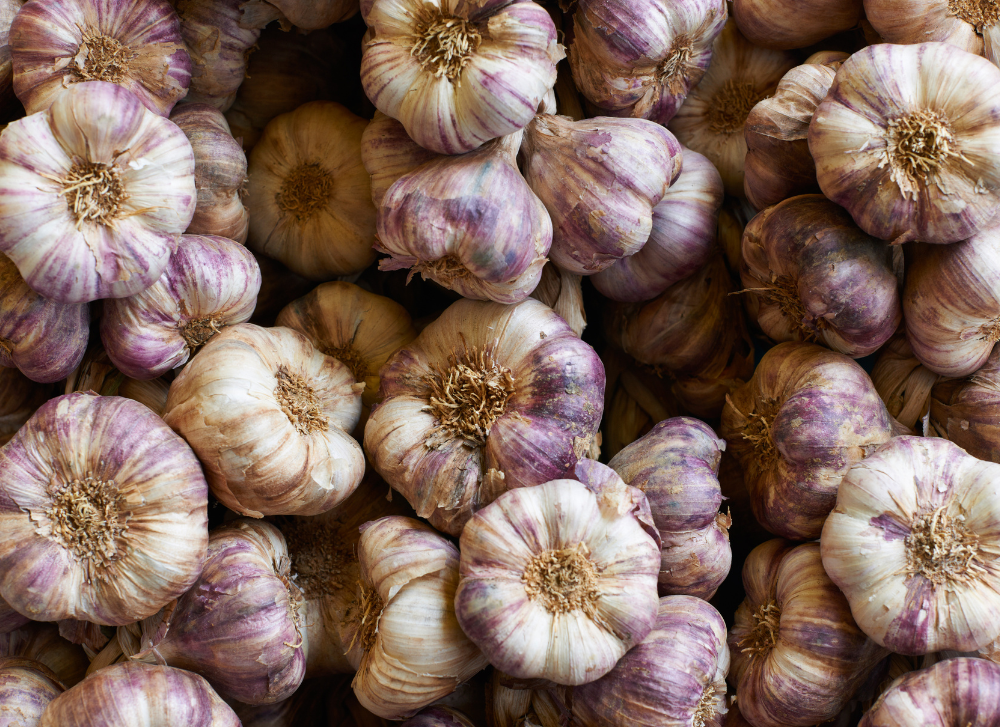Have you ever found yourself in that situation, standing in front of the honey section at the grocery store and wondering, "What should I choose from all these different types of honey?!"
Summer honey, clover honey, buckwheat honey… What are the differences? Do they have distinct benefits and flavor profiles?
Let’s explore the different types of Quebec honey to better understand this delectable product from our region!
Monofloral honeys vs. polyfloral honeys
First, we must distinguish two distinct categories of honey, if you will.
First, there are monofloral honeys, which are made with the pollen and nectar of a single type of flower. Examples include clover honey, cornflower honey, buckwheat honey, and so on.
Monofloral honeys therefore have very distinct flavors and colors due to the individual flowers. For example, cornflower honey is amber in color and has a fruity, slightly spicy taste. Buckwheat honey, on the other hand, has a much darker color and more full-bodied, even farmy aromas.
Polyfloral honeys, on the other hand, are the product of a blend of flowers, which are in season when the bees forage for them.
Thus, spring honey will have the color, aromas, and flavors of the flowers that arrive at that season. The same goes for summer honey, autumn honey, etc.
Macerations
It is also possible to find honeys made by macerating different plants from some beekeepers to create honeys with interesting properties.
For example, the company Miel Fontaine Located in Sainte-Cécile-de-Milton near Granby, in addition to making more "traditional" honey, it also makes "fir honey" and "wintergreen honey" by creating infusions with these plants. Thus, the honey takes on properties that it could not otherwise have.
Liquid honey, raw honey or churned honey?
It is also important to know how to distinguish liquid honey from raw honey and churned honey (also called creamed honey).
The only real difference is that liquid honey is heated at a low temperature to give it this property. Raw honey, on the other hand, simply hasn't been heated. Its color and opacity come from the natural crystallization of the honey. Furthermore, since it hasn't been filtered, it retains the beneficial properties of pollen, propolis, and wax residues, which add to its benefits.
Churned or creamed honey is made by churning liquid honey, usually pale in color, to give it an enticing creamy-beige color.
While runny honey is ideal for use in recipes, salad dressings, teas, and herbal teas, raw honey and creamed honey are ideal options for spreading on bread or your desserts.
Is pasteurized honey better?
The quick answer to this question: no, pasteurized honey is not recommended. The pasteurization process involves heating honey to the point where natural crystallization becomes impossible. But this eliminates all of the honey's health benefits. Pasteurized honey therefore offers far fewer health benefits than artisanal honey.
Pasteurization, however, prevents the development of botulism , a rare poisoning that can be dangerous for children under 2 years old and pregnant women. However, it is strongly recommended that people at risk do not consume honey in its entirety, whether pasteurized or not.
Discover the different types of artisanal honey in Quebec
Curious to learn more about honey and how it's made? Discover Quebec beekeeping by participating in our Signature Tours !






